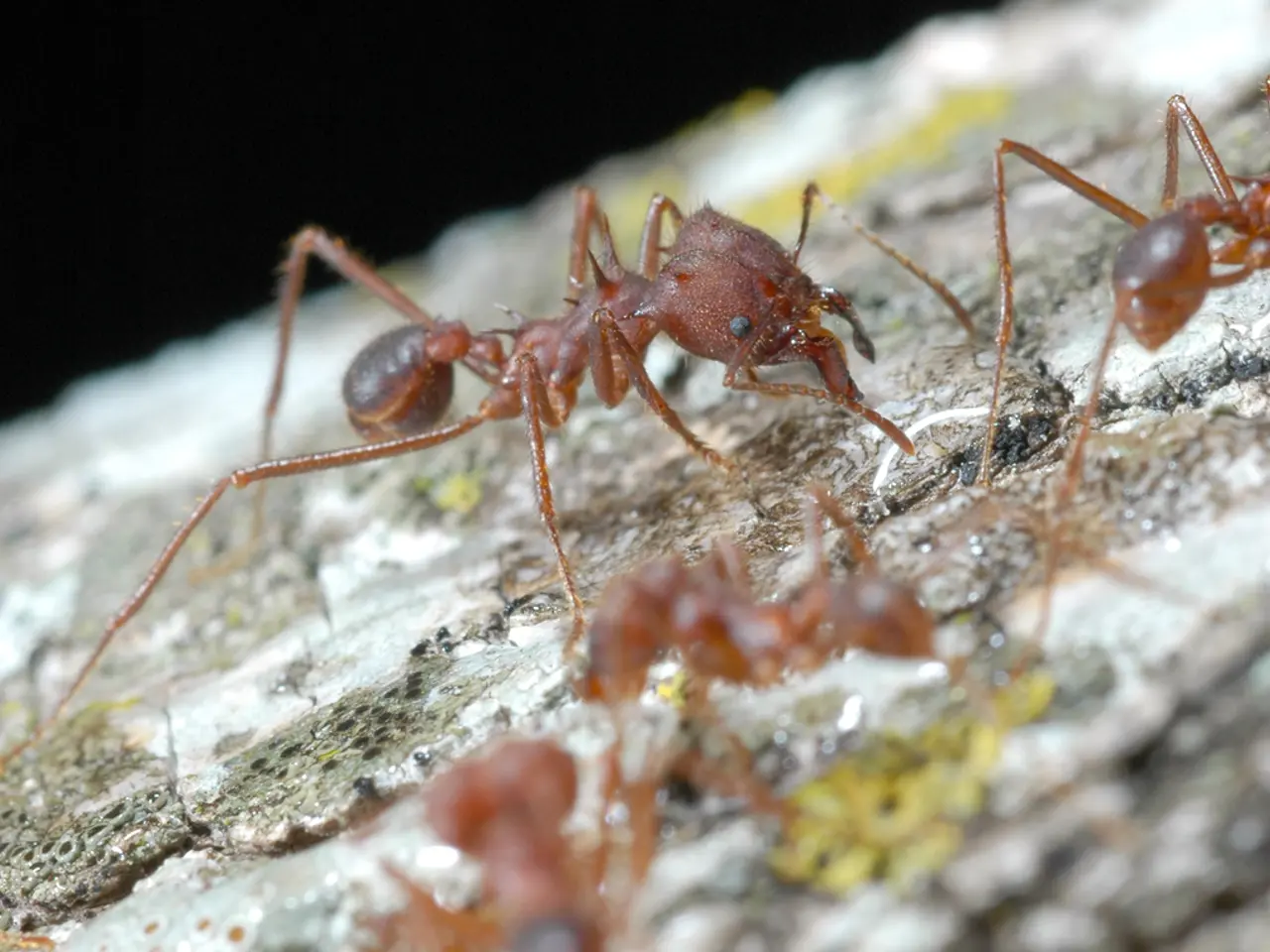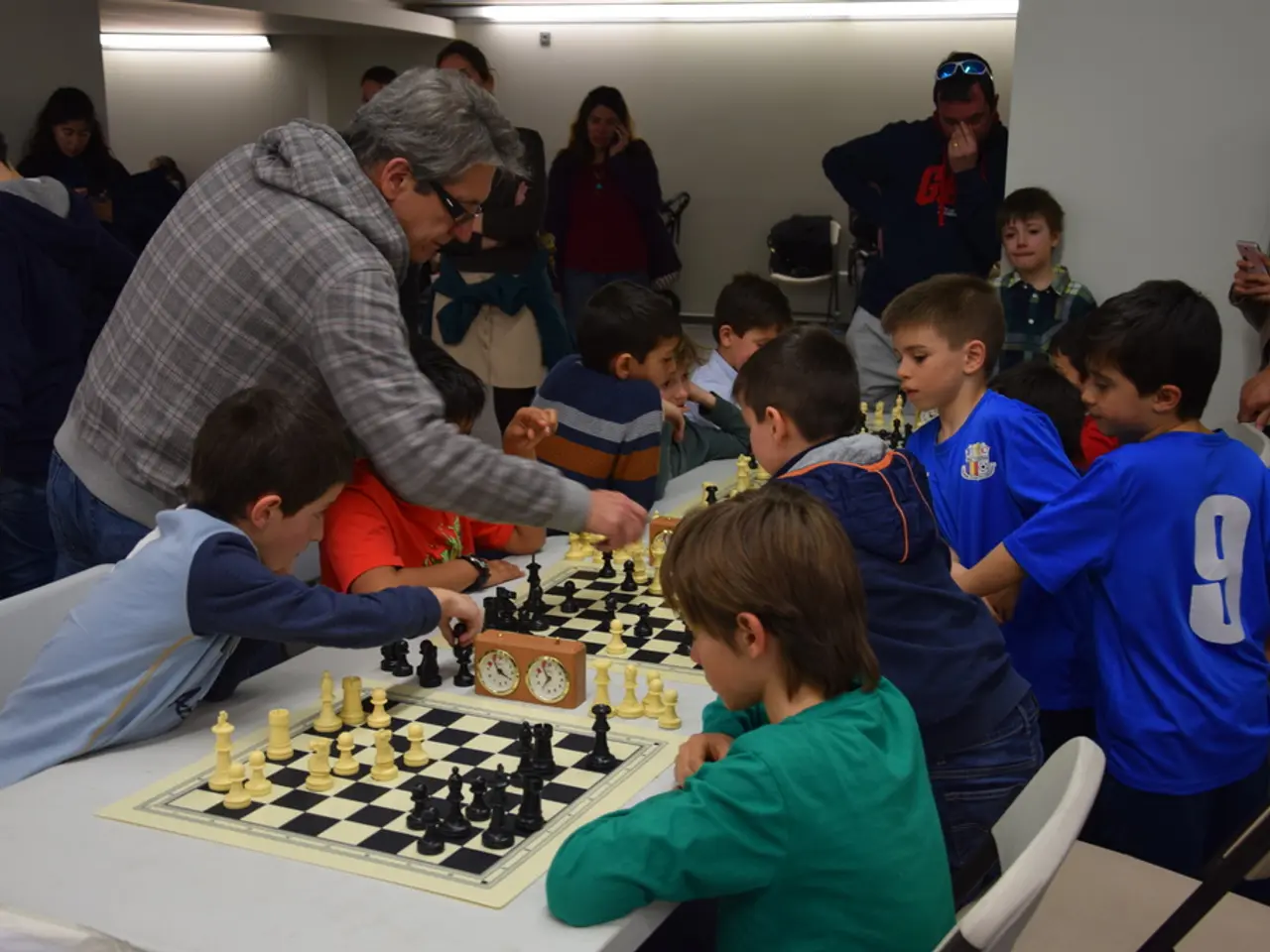Teamwork Efficiency Comparison: Study Uncovers Which Species Exhibits Superior Collaborative Abilities between Ants and Humans
In a groundbreaking study, researchers have discovered that ants exhibit superior collective cognition and problem-solving abilities compared to humans. This revelation, based on a series of experiments involving ants and humans navigating through mazes, challenges our understanding of collective intelligence and offers valuable insights for team dynamics and technological advancements.
The study, which compared the collective cognition abilities of humans and ants, was conducted using the Paratrechina longicornis, commonly known as crazy ants, and divided human participants into three groups: small (6-9 individuals), large (26 individuals), and solo participants. Each species tackled their own version of the T-shaped object, a choice based on the "piano movers' puzzle," a problem known for challenging spatial awareness and navigation skills.
The findings suggest that ant colonies possess an innate ability to share knowledge across individuals without direct communication, a phenomenon known as collective memory. This allows them to effectively navigate towards optimal solutions within complex spaces. In contrast, human cooperation evolved through different mechanisms involving joint intentionality, mutualistic collaboration, and cultural conventions.
Ants were found to move the T-shaped object through the maze more efficiently than human groups. A key aspect of ant collective cognition is obstacle clearing during group transport, where ants rapidly remove obstacles blocking food transport routes, dramatically improving efficiency without centralized control. About 25% of clearing ants become specialized repeat performers.
Another crucial aspect is chemical communication. Ants use pheromone signals to coordinate activities such as path marking and obstacle removal, enabling a seamless flow of information. This distributed decision-making, without a single ant orchestrating the action, results in emergent intelligence, a complex problem-solving and adaptive strategy.
The study invites us to rethink how collective problem-solving strategies can be optimized by harnessing principles observed in nature. Lessons for team dynamics include distributed leadership and simple local rules, where teams can outperform centralized command structures by empowering members to respond to local cues and share simple signals, fostering emergent problem-solving outcomes without micromanagement. Specialization with flexible roles, like the ants that specialize in clearing obstacles, can also benefit human teams.
Insights from ants have inspired distributed systems such as robotic swarms, autonomous traffic management, and decentralized algorithms that solve complex problems through collective behaviour rather than top-down control. Pursuing technological advancements, algorithms inspired by ant-like coordination might improve efficiency in logistics and artificial intelligence development.
Under certain conditions, human participants were restricted in communication, leaving only gestures and facial expressions as modes of interaction. This restriction, while making the task more challenging, revealed that under the right circumstances, non-verbal cues can enhance group performance, potentially transforming organizational structures.
In conclusion, the superiority of ant collective cognition lies in their decentralized, chemically mediated coordination resulting in emergent intelligence. This understanding encourages a shift towards collaborative systems where intelligence emerges from interactions among simple units rather than from any single "expert" actor. The intriguing new study has revealed that ants may outperform humans when it comes to teamwork, offering a fresh lens through which we can explore innovative solutions for overcoming challenges that require coordinated action amongst diverse agents or entities.
- The study's discovery of ant collective cognition's efficiency in navigating through complex spaces suggests potential technological advancements in fields like logistics and artificial intelligence development.
- The findings of the study also highlight the importance of distributed leadership and simple local rules in human teams, similar to the ants' mechanism of obstacle clearing during group transport.
- The study also emphasizes the potential benefits of specialization with flexible roles, inspired by the ants that specialize in clearing obstacles, in improving human team efficiency.
- The restrictions placed on human participants in the study, limiting communication to only gestures and facial expressions, led to enhanced group performance, indicating the importance of non-verbal communication in education-and-self-development and organizational structures.




